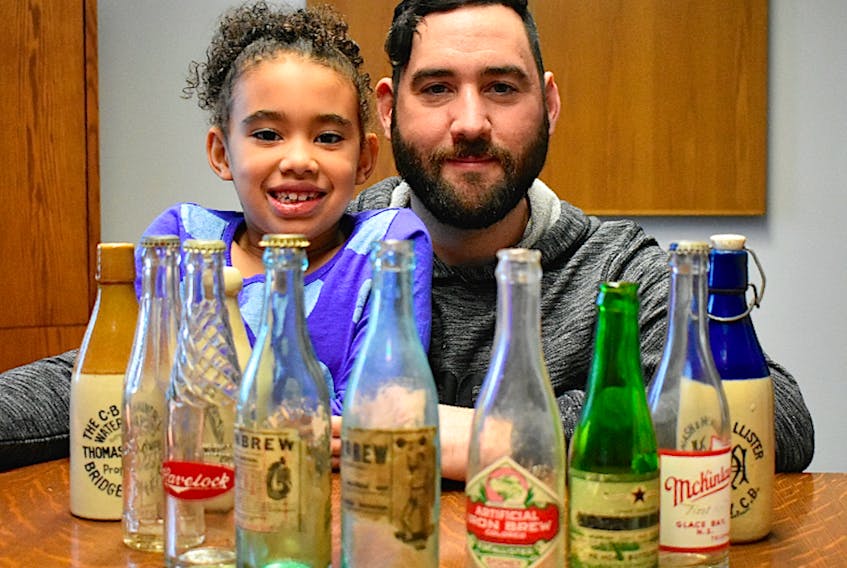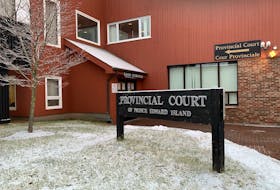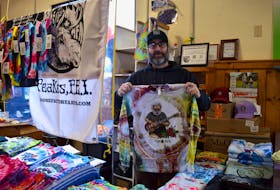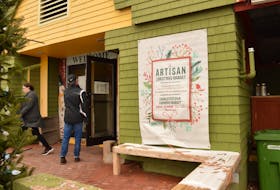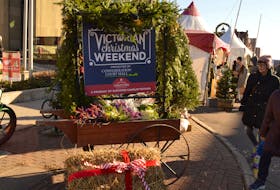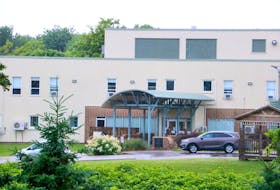SYDNEY, N.S. — It’s a Cape Breton pop culture legend.
A dark, bubbly beverage that tasted slightly fruity and looked like it could have been concocted from coal dust and tar ponds sludge, Iron Brew was the island’s unofficial soft drink for more than 100 years before it fizzled out of existence in the early 2000s.

J.R. Reid, a veritable soda savant who recently wrote a book documenting the history of bottling in Cape Breton, said Iron Brew came in two formulas — one sold out of the U.S. and the other, called Irn-Bru, that was later developed in Scotland. Both were bottled in Cape Breton where the earliest reference of someone manufacturing soft drinks locally is a Nov. 1, 1851, ad in the Cape Breton News for Mr. Gregory’s ginger beer, lemon syrup and soda water. Iron Brew likely popped up in the late 1800s when the temperance movement made alcohol consumption socially unacceptable and many counties in Nova Scotia went dry.
“That’s how a lot of what they call temperate drinks and sodas and stuff like that started becoming really popular,” explained Reid, a 34-year-old Georges River native whose book “Cape Breton Soda and Ginger Beer Bottles” contains more than 200 photos, as well as detailed accounts of the bottling companies that existed in Cape Breton up until present day. “It was also looked on as kind of a health benefit because a lot of the drinking water wasn’t safe.”
By the Prohibition era, when alcohol was outlawed, Cape Breton was overflowing with companies that brewed and bottled carbonated drinks like orange phosphate, sarsaparilla, lemon sour, imperial tonic, stone ginger beer, kola champagne, cream soda and, of course, Iron Brew, said Reid, who estimates as many as 30 various companies operated locally between 1910 and 1929.
While the Havelock, P. McAllister, W.E. Nash, Sydney Mineral Works, Home Bottling, Mayflower Bottling and other brands of Iron Brew were made from a New York company’s formula, the McKinlay and Sons brand Iron Brew — which was made and bottled in Glace Bay right up until 1988 — was from the Irn-Bru recipe patented by A.G. Barr in Glasgow, Scotland, in 1901, where it’s still the No. 1-selling soft drink.
“The lore from the family was that just on a matter of a handshake, the McKinlays got permission to produce this drink in Cape Breton,” said Reid, who noted that Nash and McAllister’s Mineral Water Works also started advertising in the newspaper that they were the sole bottlers of the “ideal tonic in Cape Breton, Iron Brew.”
“During the heyday of all the bottling companies, it was something that was available everywhere — you could buy it at any bottling company anywhere in Canada and the U.S., the drink was made across North America, whether it was the same I don’t know. Then toward the end, it was only available from two places, and that was from the McKinlays and the original source in Scotland. Now the only place you can buy authentic Irn-Bru is from the original source in Scotland.”
Shortly after McKinlay and Sons went out of business, Cape Breton Beverages began bottling the Iron Brew most Cape Bretoners are likely to remember. The local Pepsi bottler’s version had a plain white label and simple black text that touted it as Cape Breton’s Ir’n Bru. It also contained a disclaimer that it was “Not a source of iron.”
“There were two reasons for us doing that. One, there was no iron it. And secondly, it was not ‘brewed,’” said John MacLean, vice-president of Cape Breton Beverages.
MacLean said Cape Breton’s Ir’n Bru remained popular locally and they only discontinued making it because the concentrated extract was no longer available.
“We stopped because we couldn’t get it from the flavour house anymore. The concentrate, they stopped making it,” he said.
“We sought to get that again because we had a demand for it, but that’s been some time ago.”

Reid, who lives in Edmonton where he works as a journeyman steamfitter, first became interested in bottling when he found an old glass Pepsi bottle in the woods near his home when he was eight years old.
“I brought it home instead of throwing it away or breaking it like a kid normally would do,” recalled Reid, whose collection now includes more than 100 different embossed bottles, 33 stoneware containers, dozens of labels and caps, and several soda syphons, all made in Cape Breton before the 1930s.


In addition to companies such as Mac’s Beverages, Sunshine Beverages, Sydney Mineral Springs and Ideal Beverages that people may still remember, readers of “Cape Breton Soda and Ginger Beer Bottles” will recognize family names such as Mancini, Lynch and Ogilvie that are familiar today. The father of philanthropist Nina Cohen was in the bottling business, as was the father of late Hollywood director Daniel Petrie, whose son Daniel Petrie Jr. became a well-known writer, producer and director in his own right.
In fact, the Petrie patriarch successfully sued the city into returning barrels of booze that were seized when he was caught smuggling them into Cape Breton.
“William Petrie was caught bringing in somewhere near 100 barrels of ale and port on the train,” said Reid. “Basically, it set a precedent in court cases in Canada at the time. For a while it was actually cited by lawyers. He got caught bringing in the barrels, they were confiscated and taken to the city lockup. He actually went to court and made action against the city and got his goods back because he went after the City of Sydney for stealing his property.”
The book also tells the tragic story of Fanny Ein, who died in a 1908 soda-related accident when the metal head blew off a cylinder in the Glace Bay confectionary store run by her husband, prominent businessman Philip Ein, and struck her in the face.
For Reid, antique bottles are a lens through which he can glimpse the island’s past. During the course of his independent research on Cape Breton history, he’s acquired more than 3,000 historical images, and several books and binders full of documents. He also owns a photo album that belonged to a nurse who worked at Moxham Castle when it was a military hospital during the First World War, a chair from the main entrance of Moxham Castle, and the bell from the steamship Marion, which ran the Bras d’Or Lake from North Sydney to Whycocomagh from the 1880s until it was destroyed by fire in 1922.
“Anything to do with the history of Cape Breton, I save,” said Reid.
For a copy of “Cape Breton Soda and Ginger Beer Bottles” ($30, not including shipping), contact Reid by email at [email protected], or by phone at 780-668-5762.
RELATED
P.E.I. teenager digs into the past with entrepreneurial flare: "As a mere seven-year-old, [Cameron] Ralph stumbled across some very old bottles while walking in the family’s large woodlot."

